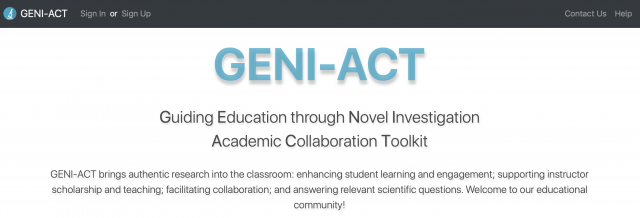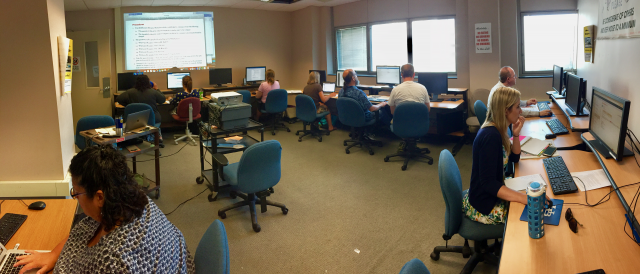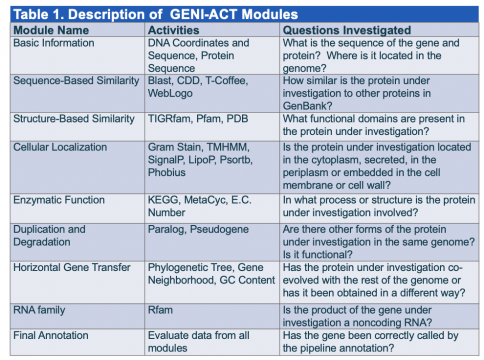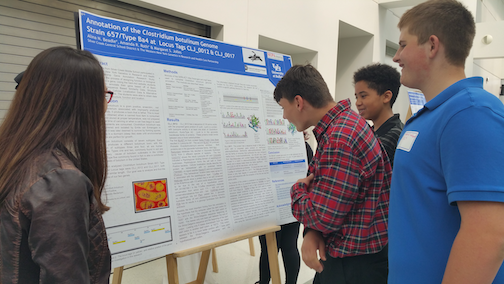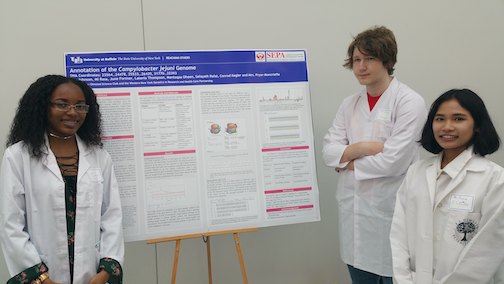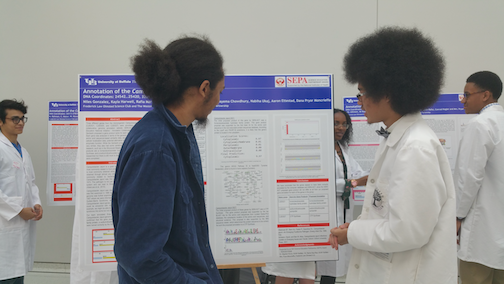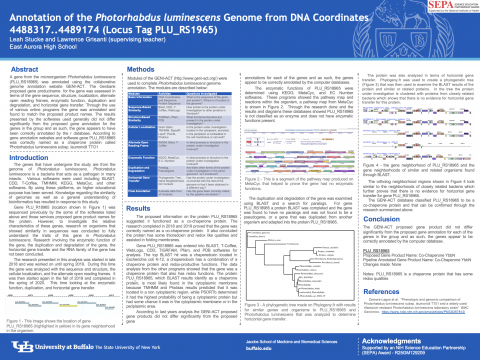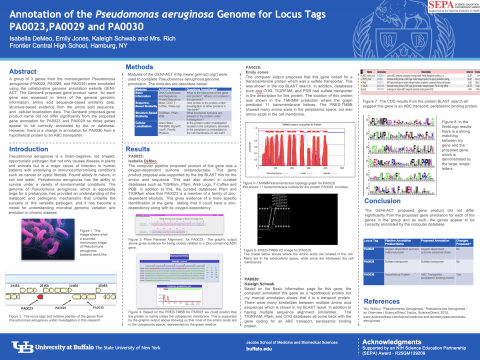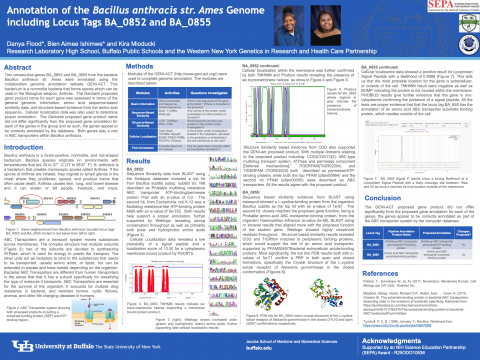Western New York Genetics in Research and Health Care Partnership
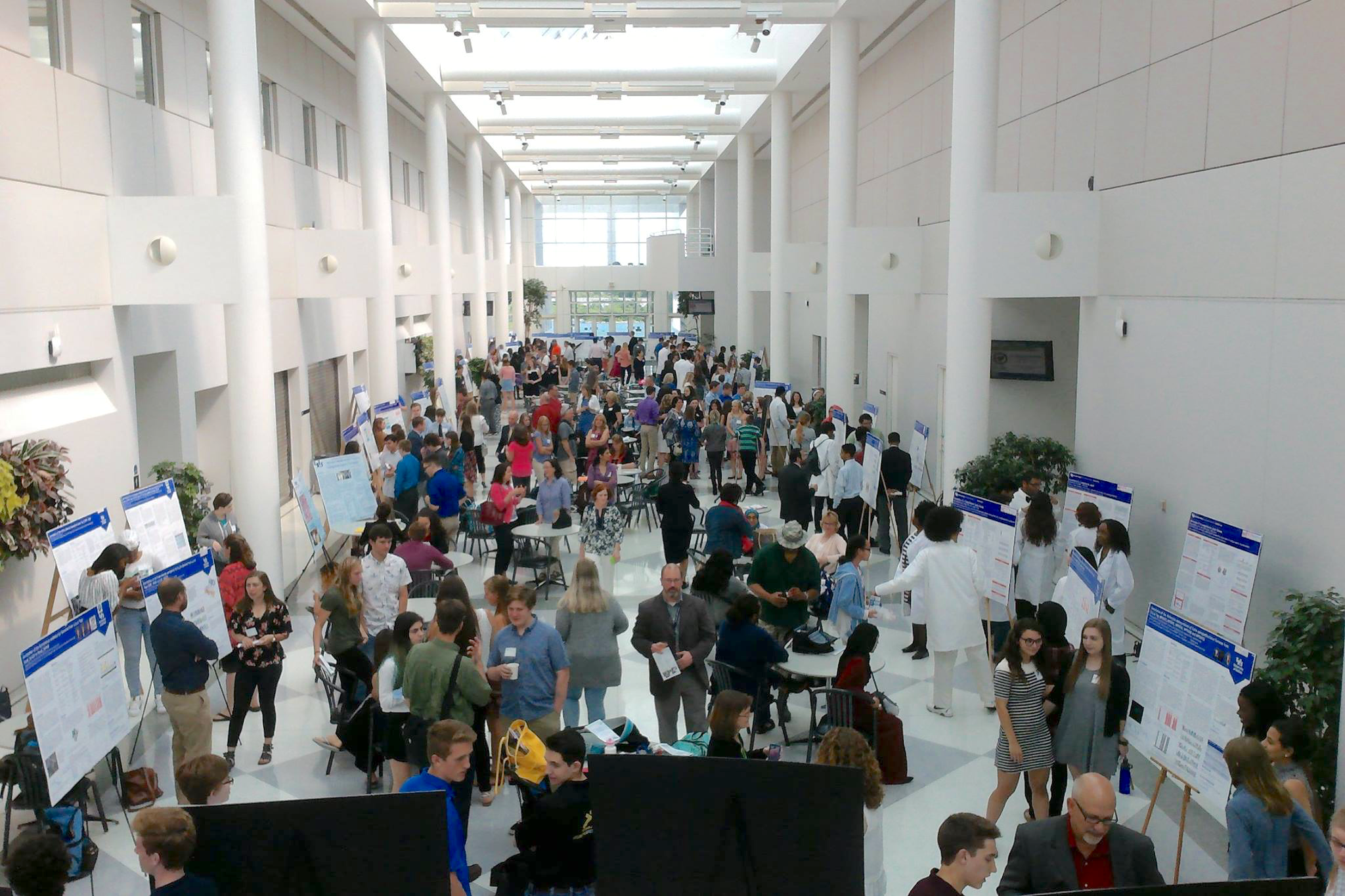
-
Abstract
The Western New York Genetics in Research and Health Care Partnership will develop an ongoing partnership with disadvantaged schools across a 14-county region that will serve as a pipeline for teacher and student recruitment training and mentorship in bioscience with a particular focus on genetics. It is designed to support career paths for students in both scientific research and the health professions emphasizing assistance to those from underrepresented and disadvantaged groups as well as to familiarize teachers with basic bioinformatics concepts that they can introduce into their classrooms. The Partnership will be led by the PIs representing the University at Buffalo Department of Biotechnical and Clinical Laboratory Sciences (BCLS) and the NYS Area Health Education Center System which has its Statewide Office based in the University at Buffalo Department of Family Medicine. Members will include the Erie Niagara AHEC and WNY Rural AHEC along with the 15 to 25 school districts that will be invited to join over the 5-year project period. At project start AHEC analysis will identify disadvantaged school districts serving underrepresented populations. Each year 3 to 5 districts will be invited to join the Partnership making them eligible for teacher training (total 20 teachers per year) and technical support for advanced experiential learning projects and a Capstone Symposium (total 100 students per year). Twenty biology teachers annually from the partnering schools will attend a two-week summer workshop at the University at Buffalo where they will receive training in use of the Integrated Microbial Genomes Annotation Collaboration Toolkit (IMG-ACT) of the U.S. Department of Energy Joint Genome Institute. During the fall semester of each school year AHEC will organize 4-5 health/science college and career exploration sessions to familiarize students with the gene annotation project and to give it some ‘real world’ context. Students will develop career plans by the last of these sessions as well as indicate their interest in doing gene annotation during the spring semester. Each teacher will then work with at least 5 students (100 total per year) to participate in genome annotation using the IMG-ACT during the school year. Each spring the Capstone Symposium will be held at UB bringing participating students and teachers together to present their projects and network with researchers and employers. AHEC will track and offer support (e.g. scholarship and career information new internship opportunities) to participating students as they enter and progress through college supporting entry to and retention in research and health careers in the region.
Project Photos
Project Audience
9-12 High School Students and Teachers
Subjects Addressed
Genome annotation using web-based publicly available databases, giving participants research experiences with basic bioinformatics and the dissemination of their research findings.


